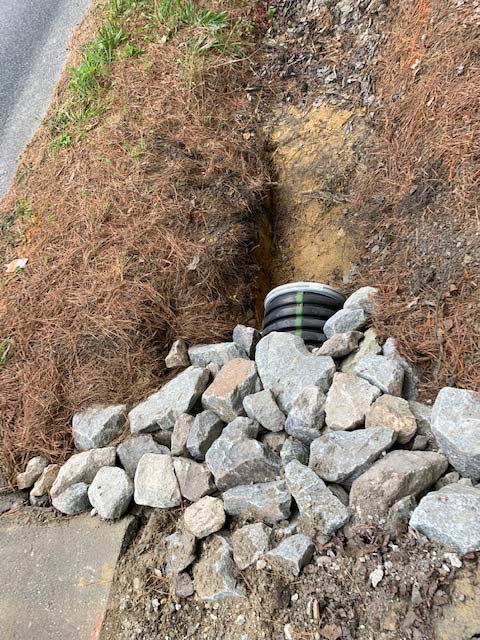Professional Road Construction Providers for Smooth Travel
Wiki Article
Culvert Installation Made Easy: Step-by-Step Overview for Success
Setting up culverts may feel like an uncomplicated task, yet guaranteeing an effective outcome requires mindful planning and implementation. From picking the proper culvert size to integrating proper water drainage measures, each action in the installment procedure plays an important duty in the capability and durability of the culvert system. By adhering to a methodical approach and taking notice of essential details, the installation can proceed smoothly, reducing prospective problems down the line. Remain tuned to reveal the necessary steps and factors to consider that can make culvert setup a smooth and successful undertaking.Picking the Right Culvert Dimension
Selecting the proper culvert dimension is critical for guaranteeing reliable water circulation and architectural stability in culvert installment projects - Pad Construction. The size of the culvert directly influences the flow ability of water via the structure. A culvert that is as well little can lead to flooding and overflow, while one that is also large might cause reduced water rate, potentially creating debris accumulation and obstructionsTo establish the best culvert dimension, elements such as the watershed location, peak circulation prices, and hydraulic efficiency requirement to be carefully taken into consideration. Estimations based upon these parameters help in picking a dimension that can sufficiently manage the anticipated water quantity while reducing the danger of clogs and structural failure.
It is crucial to speak with design standards and standards to ensure that the picked culvert size satisfies the job needs and regional regulations (Pad Construction). By choosing the right culvert dimension, task supervisors can optimize water flow, protect against possible issues, and improve the total efficiency and durability of the culvert installation
Preparing the Installment Website
Effective culvert setup requires thorough prep work of the setup website to ensure optimal architectural support and performance. Before commencing the setup procedure, it is crucial to clear the site of any kind of particles, plant life, or blockages that could hinder the culvert's placement.Furthermore, it is essential to consider aspects such as soil structure, groundwater levels, and environmental impacts when preparing the installment site. Performing a comprehensive website analysis can assist determine any kind of prospective difficulties or threats that may affect the culvert's efficiency. By making the effort to prepare the installment website properly, you can help ensure an effective culvert setup that meets architectural needs and ensures lasting performance.
Putting the Culvert Correctly

The grade at which the culvert is placed is critical for maintaining an appropriate slope for water circulation. A gradual incline assists protect against merging and advertises reliable water official site drainage. Additionally, the culvert should be oriented appropriately to guarantee that the inlet and electrical outlet remain in the correct areas. This alignment is essential for the culvert to operate successfully in taking care of water flow.
Backfilling and Compacting the Soil
Proper backfilling and compaction of the dirt around the culvert is important to make sure security and prevent possible concerns in the future. As soon as the culvert is properly put, the next vital action is to backfill the location around it with appropriate product.Compaction aids in lowering the chances of negotiation and ensures consistent support around the culvert. It is important to small the soil uniformly on all sides of the culvert to preserve its structural integrity.
Proper backfilling and compaction not just provide stability to the culvert however likewise help in stopping dirt disintegration and maintaining the longevity of the culvert navigate to this site system.
Guaranteeing Correct Water Drainage Assimilation
Incorporating efficient drainage solutions plays a vital role in the overall discover here capability and durability of culvert setups. Correct water drainage combination is important for taking care of water circulation, preventing disintegration, and making sure the architectural stability of the culvert system. To achieve this, it is important to create a detailed drainage strategy that thinks about aspects such as the quantity of water expected, the topography of the location, and the kind of dirt present.
In addition, integrating features like erosion control measures, such as riprap or plants, can further enhance the performance of the drainage system. By thoroughly preparing and executing these drain options, culvert installations can function effectively and stand up to the examination of time.
Final Thought
In verdict, correct culvert setup is essential for keeping effective drain systems. By picking the best culvert dimension, preparing the setup website, placing the culvert correctly, backfilling and compacting the dirt, and making certain appropriate water drainage integration, success can be attained. Complying with these steps will aid make certain the longevity and efficiency of the culvert, ultimately adding to the total success of the drainage system.Report this wiki page